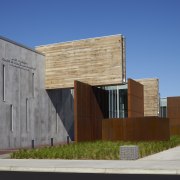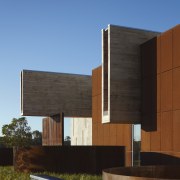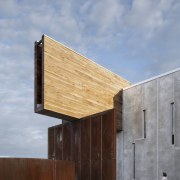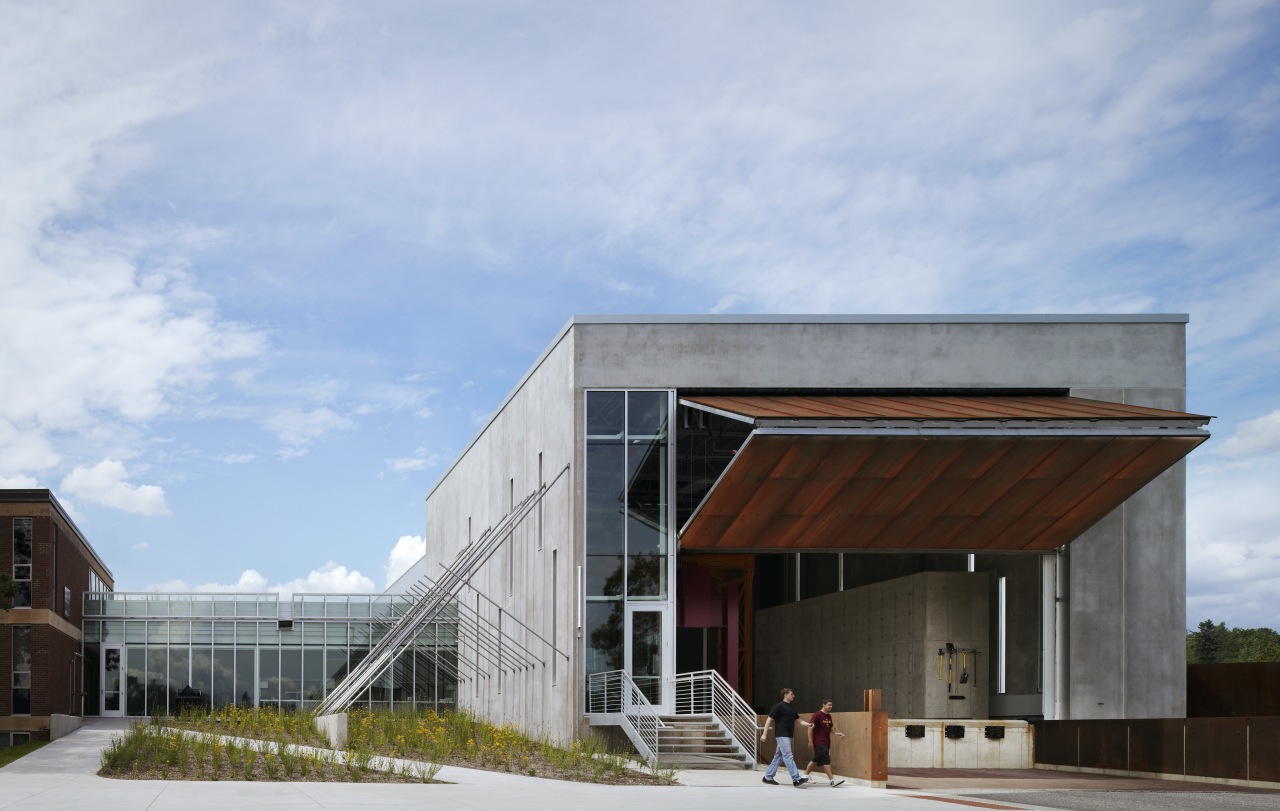Healthy expression - New James I Swenson Civil Engineering Building at the University of Minnesota Duluth by Ross Barney Architects
New James I Swenson Civil Engineering Building at the University of Minnesota Duluth by Ross Barney Architects
Keeping sight of ultimate career goals can be challenging for students as waves of exams come and go. So what better way for a university to provide aspirational incentive than create a building that embodies the outcome of their studies.
When the University of Minnesota Duluth introduced a Bachelor of Science degree in Civil Engineering, a new 3350m² building was required to house the classrooms, laboratories and ancillary spaces associated with the faculty. The new building was to wrap around and have connection to the existing Voss Kovach Hall also concerned with various engineering disciplines.
Architect Carol Ross Barney was asked to create a structure that would tie in with the existing campus architecture, build on and reinforce the existing circulation patterns and reflect the qualities required to attain an LEED Gold Certified rating.
However one of the most impactful aspects of the project was the intention that the building would offer a larger-than-life reflection of the civil engineering process. The design highlights the construction and site systems related to the field of study, says Ross Barney.
"Several aspects of the building reflect, even exaggerate, typical engineering elements for example, oversized scuppers channel stormwater from the roof to the trio of large Corten steel tubs that catch and funnel water to the monumental French drain," says Ross Barney.
Naturally weathering Corten steel is also used as facade rain screens and on giant folding doors at one end of the building that admit gantry cranes into the double-height hydraulics laboratory and structural lab.
"The building exterior is predominantly steel, glass and precast concrete. The puzzle-piece precast walls of the structural lab educate at a glance that precast can be formed into almost any shape. Slot windows fill voids between the precast shapes and form a decorative element."
Taking it further, the south wall of the lab retains the tilt-up braces and kickers used to support the concrete panels during construction.
Another engineering reminder is right under the students' feet the entry walk is effectively a study in steel manufacture. Burnished steel plates line the path and taconite pellets used in the steel manufacturing process are next to the walkway.
The building-as-educational-tool concept carries on inside with exposed elements. One of the giant rain scuppers protrudes into the entry corridor.
In terms of layout, at ground level are the hydrology lab and structural lab, both two-storey areas that required ceiling heights of over 9m. Classrooms and faculty offices are located on the second level. The new Swenson building connects to the Voss Kovach Hall adjacent to the main entrance of the older structure. The Link a one-storey glazed corridor provides an additional connection between the old and new.
"The layout of the two-level main laboratories facilitates experimentation, but also observation. A glass wall separates the main lab from the entry and circulation path providing opportunity to witness experiments as they unfold," says Ross Barney. "Similarly, the central stair to the second level engages from one of the hydraulics lab walls. A glass plank landing facilitates observation."
Another important object example presented by the design of these civil engineering labs and offices can be seen in its sustainable aspects.
Several elements contribute to the building's LEED Gold Certified rating including the choice of construction materials. The Corten steel was manufactured locally and the scuppers are clad in dismantled pickle barrels. Gabion site walls are filled with reclaimed taconite rock from the region and these are repeated as internal wall elements. Native plantings and rain gardens are prominent on the east and west elevations. A green roof with native plant materials helps to reduce storm runoff, cool the building, reduce noise and also reduce glare from the surrounding buildings.
Inside, the sustainable strategies that are part of the LEED rating system for new construction, create a healthy working environment for students and staff. Increased ventilation, use of low-emission construction materials and advanced lighting control all play their part. Advanced thermal comfort control, access to daylight and views, and underfloor air distribution also contribute.
The Jame I Swenson Civil Engineering Building provides the best possible spur to creative thought and academic achievement a healthy, giant-sized, walk-in life example.
Credit list
Architect
Contractor
Civil engineer
Exterior wall systems, rain barrels
Flooring
Windows, curtain walls and doors
Ventilation
Precast concrete insulation system
Lighting
Paints and finishes
Seating
Architect of record
Structural engineer
Landscape architect
Roofing
Walls
Glazing
Displacement ventilation diffusers
Lighting control systems
Millwork
Plumbing and water systems
Story by: Charles Moxham
Home kitchen bathroom commercial design
Reflection and repose
9 tile shapes and finishes that think outside the square
Curves upon curves
















